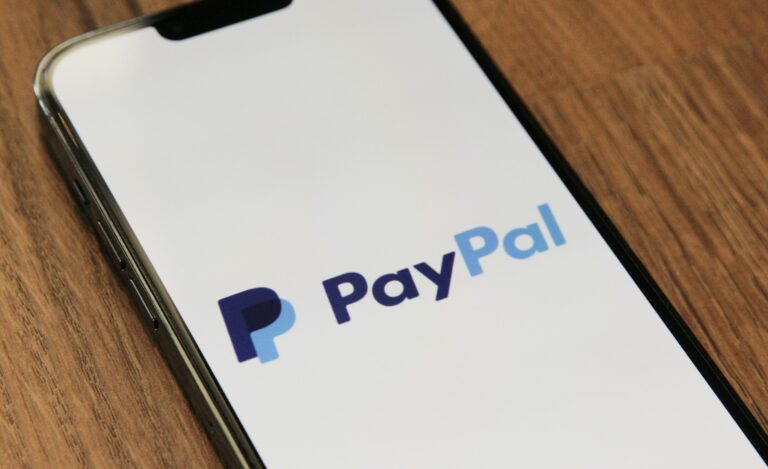Your business loses money every time a customer’s payment fails. High-risk merchants in particular watch potential sales slip away because card networks decline legitimate transactions.
You can reverse this trend and increase your transaction approval rate within 30 days.
If your business processes $20,000 monthly but operates at a 75% approval rate instead of 90%, you’re leaving $3,000 on the table each month. That’s $36,000 annually. Money your customers already wanted to spend with you.
Payment optimization transforms your entire payment processing infrastructure to maximize approved transactions.
What Defines Transaction Approval Rate
The transaction approval rate (also called authorization rate or payment acceptance rate) measures the percentage of payment attempts that issuing banks successfully authorize. Payment processors calculate this metric by dividing approved transactions by the total number of attempted transactions.
Here’s an example: Your e-commerce store processes 1,000 transactions worth $75,000 in total revenue. Only 750 transactions succeed. Your transaction approval rate sits at 75%, meaning you’ve lost $18,750 in potential sales.
Payment gateways charge fees for every transaction attempt, approved or declined. These fees range from $0.20 to $2.50 per attempt. Your business pays these costs even when transactions fail, compounding your losses.
Why Approval Rates Matter for Your Business
Authorization rates directly impact your bottom line in multiple ways. 45% of consumers abandon purchases after experiencing a false decline. They don’t retry, they shop with your competitors instead.
Card-not-present transactions face significantly higher decline rates than in-person purchases. CNP transactions experience 15-20% decline rates compared to just 2-3% for card-present purchases.
Each declined transaction is lost revenue from traffic you’ve already paid to acquire. High-volume merchants processing thousands of transactions can recover millions in revenue by improving approval rates by just 1-2%.
Payment processors also monitor your chargeback ratios. Excessive chargebacks trigger penalties and can result in your business getting placed on the MATCH list, severely limiting your payment processing options.
Common Reasons Payment Processors Decline Transactions
Understanding why card networks and issuing banks decline transactions helps you address the root causes systematically.
Insufficient funds top the list. Customers simply lack available credit or account balances to complete purchases. You cannot control this factor, but you can offer alternative payment methods like buy-now-pay-later options.
Incorrect card details cause frequent declines. Customers enter wrong CVV codes, outdated expiration dates, or billing addresses that don’t match bank records. Clear error messages guide customers to correct these issues immediately.
Fraud detection systems protect all parties but generate false positives. Issuing banks review transactions using limited data: card numbers, amounts, timestamps, and merchant names. Banks decline approximately 20% of transactions due to suspected fraud without access to device fingerprints, browsing behavior, or account history. Alarmingly, 40% of these fraud declines represent legitimate customers.
Cross-border transactions trigger additional scrutiny. Card networks flag international purchases as higher risk. Currency mismatches and unfamiliar acquiring banks compound these issues.
Technical failures disrupt payment processing. Network timeouts, gateway downtime, or integration errors cause legitimate transactions to fail through no fault of customers or merchants.
“Do not honor” declines provide frustratingly vague explanations. Issuing banks use this code when they decline transactions without specifying reasons, leaving merchants unable to address specific problems.
How Merchant Category Codes Affect Authorization Rates
Your merchant category code (MCC) significantly influences how issuing banks evaluate your transactions. Card networks assign these four-digit codes to classify your business type.
MCCs help banks track purchasing patterns and assess risk levels. High-risk industries—supplements, adult entertainment, gambling, and digital goods—face automatic scrutiny. Some banks decline transactions from specific MCCs by default, regardless of transaction legitimacy.
Lower transaction amounts typically receive approval more easily. Banks perceive smaller purchases as lower risk, reducing potential losses from fraud. Testing different price points helps you find the sweet spot between conversion rates and approval rates.
Strategic Solutions to Increase Payment Authorizations
Modern payment optimization strategies leverage technology and data to maximize approved transactions. These proven approaches can deliver results within 30 days.
Implement Smart Routing Technology
Smart routing dynamically selects the optimal payment processor for each transaction. The system analyzes factors like customer location, card type, issuing bank, and historical performance data to route payments through the acquiring bank most likely to approve them.
Real-time routing adjustments respond immediately to changing conditions. When one acquirer starts declining specific card types or currencies, smart routing automatically redirects transactions to alternative processors with higher success rates for those parameters.
Enable Network Tokenization
Network tokenization replaces sensitive card details with secure tokens that work across payment processors. This technology updates expired cards automatically and maintains current account information without requiring customer action.
Visa Account Updater (VAU) and Mastercard Account Updater (MAU) services keep card details current. You can switch them on in an instant and are useful for recurring billing and subscription businesses. These inexpensive services significantly increase customer lifetime value by reducing declined renewals.
Leverage Local Acquiring and Payment Methods
Processing transactions through local acquiring banks improves cross-border approval rates. Local acquirers reduce fraud suspicion, eliminate cross-border fees that trigger declines, and align with regional banking infrastructure.
Supporting region-specific payment methods captures customers who prefer alternatives to credit cards. iDEAL dominates Netherlands commerce, Pix leads in Brazil, and UPI serves India’s massive market. Digital wallets like Apple Pay, Google Pay, and PayPal provide familiar options that boost conversions.
Offering multiple payment methods increases the likelihood that customers can complete purchases using their preferred, pre-approved options. Payment processors supporting diverse methods report measurably higher acceptance rates.
Optimize 3D Secure Authentication
Strong customer authentication (SCA) requirements mandate additional verification for online payments in many markets. 3D Secure (3DS) provides this authentication layer while potentially shifting chargeback liability from merchants to issuing banks.
Modern 3DS implementations use risk-based authentication. Low-risk transactions pass through without customer friction, while suspicious activity triggers additional verification steps. The additional verification is a form of 2FA in the form of a text message or in-app approval.
Configurable 3DS workflows let you apply mandatory authentication only when risk signals justify it. Overly strict fraud tools hurt approval rates by falsely declining good customers.
Share Fraud Intelligence with Issuing Banks
Issuing banks make authorization decisions using limited transaction data. Merchants who conduct fraud analysis pre-authorization can share additional relevant information with banks. This gives them confidence to approve transactions.
Building relationships with card networks shows your commitment to fraud prevention. Banks track merchant performance over time. Consistently sending only legitimate transactions earns higher overall approval rates as issuing banks develop confidence in your screening processes.
Display Accepted Payment Brands Prominently
Clear visual indicators showing which credit cards and payment methods you accept reduce confusion and failed attempts. Display current Visa, Mastercard, American Express, Discover, and Maestro logos in your checkout footer.
Publish disclaimers about geographic restrictions on debit transactions. EU banks only approve EU debit purchases, while US banks restrict debit transactions to domestic use. Setting proper expectations prevents decline fees from incompatible transaction attempts.
Support Multiple Currencies
Charging customers in their local currency improves cross-border transaction approval rates. Card networks and issuing banks approve domestic-currency transactions more readily than international purchases requiring conversion.
Dynamic currency conversion at checkout gives customers control over which currency appears on their statements. This transparency builds trust and reduces the foreign-transaction flags that trigger declines.
Optimize Your Checkout Experience
Your checkout design directly impacts payment success. Streamlined processes reduce errors and abandonment while increasing approved transactions.
Simplify form fields to collect only essential information. Every additional field increases abandonment risk.
Enable guest checkout options. Forcing account creation creates unnecessary friction that drives customers away.
Implement clear, specific error messages that guide customers to fix problems. Replace generic “payment declined” notices with actionable information. “Your card was declined due to insufficient funds. Please try another payment method.”
Optimize checkout for mobile devices. Mobile commerce dominates many markets, and cumbersome mobile experiences cause abandoned carts. Ensure payment forms work seamlessly across all screen sizes and platforms.
Display trust signals prominently. Security badges, SSL certificates, and encryption indicators reassure customers. This confidence reduces hesitation that leads to abandoned transactions.
Monitor Performance Metrics
Data-driven optimization means tracking key performance indicators that reveal improvement opportunities.
Track your overall transaction approval rate as your primary metric. Establish baseline performance, then measure changes after implementing optimization strategies.
Categorize decline reasons to identify patterns. Group failed transactions by error codes to determine which issues occur most frequently. This analysis reveals which problems you should prioritize.
Segment approval rates by card type, geography, device type, and customer segment. Different payment methods and markets show varying performance patterns that require targeted approaches.
Monitor time-based patterns to detect when declines spike. Some businesses experience higher decline rates during specific hours, days, or seasons. Understanding these patterns helps you prepare appropriate responses.
BOOST CONVERSIONS, REDUCE DECLINES
Take Action on Your Transaction Approval Rate
Payment optimization can deliver results within 30 days when you implement these improvements.
A low transaction approval rate is unrealized revenue. The customers want to buy from you, but your payment infrastructure simply needs optimization to let those transactions succeed. Start implementing these strategies today and watch your approval rates and revenue climb within 30 days.









